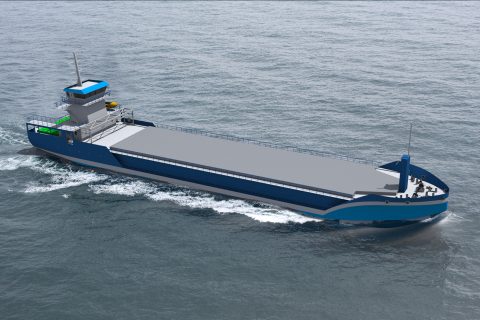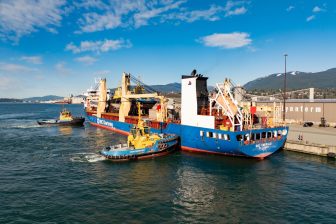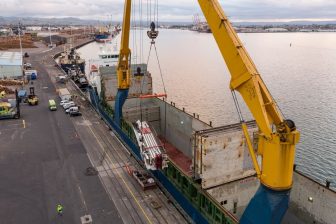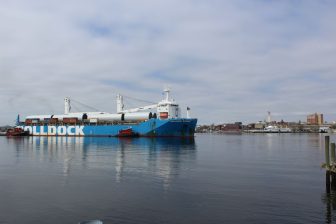
DEKC develops breakbulk vessel with modular, exchangeable engine room
Engineering company DEKC has developed a new ship which can help shipowners invest in their fleet without having to worry if today’s choices will still be relevant in 10 years time. DEKC’s new vessel design, called the FutureTrader, combines an optimized hull with a modular and exchangeable engine room.
With an ageing shortsea and general cargo fleet and new regulation pushing for a more sustainable industry, shipowners will soon need to take action and reconsider traditional vessel design. However, at this point in time the decision for a new vessel comes with difficult choices: will you stick to diesel and risk having an outdated vessel in 10 years time, or do you take a leap of faith and invest in alternative fuels like LNG or even hydrogen?
The main challenge lies in the long lifespan of vessels and the ever-increasing speed of technological development and innovation. So the question is: how can you design a vessel today that will be able to adapt to future developments?
According to DEKC, the solution is less complicated that one might imagine. ‘The industry knows that diesel will not last forever as the primary source of power on a ship, but no one knows exactly which direction to look for an alternative. That is why DEKC is developing a concept for a modular engine room, that can easily be exchanged for a unit running on a different power source. Whether this will become hydrogen, ammonia or electricity, in this way, a vessel designed today can start its life running on diesel, and once an alternative source of power is available, the power pack can simply be swapped for a new one’, the company states.
The FutureTrader, as DEKC’s design is called, is a 6,000 – 8,000 dwt general cargo vessel which combines such a modular and exchangeable power pack, or engine room, with optimized hull design.
20% more efficient
Vessels are built for a lifespan of twenty years or more and, although many elements onboard can be changed, its hull shape will remain mostly the same. ‘It is for this reason that optimising the vessel’s hull shape in an early stage of the design process will pay itself back during its operational lifespan’, DEKC states.
DEKC uses a method called parametric hull optimisation to determine the best hull shape. This method finds the most optimal hull shape based on pre-set parameters by using numerical computer models and running the results through a digital basin in the company’s Computational Fluid Dynamics (CFD) software. ‘In most cases, the optimum hull shape will cause minimal resistance through the water and thus minimal fuel consumption, increasing the ship’s performance by up to 20%’, the company states.
‘Optimisation of new designs does not stop at the hull; new insights and design tools allow us to optimise the holds for specific trades or increase deadweight without compromising on other aspects of the design. It is about optimising a vessel for its intended trade and route’, adds DEKC.
This article was first published on SWZ|Maritime, a sister publication of PCJ.
The future design of multipurpose and heavy-lift vessels will be one of the main topics of the third edition of the Project Cargo Summit, which this year will take place as an online event due to the Covid-19 pandemic.
Project Cargo Summit 2020 Online will be held at the 23rd and 24th of September from 10.00 – 12.00 CET and is freely accessible to all project cargo professionals around the globe. Interested? For more information and to register, please visit our event website at www.projectcargosummit.com.
You just read one of our premium articles free of charge
Register now to keep reading premium articles.




